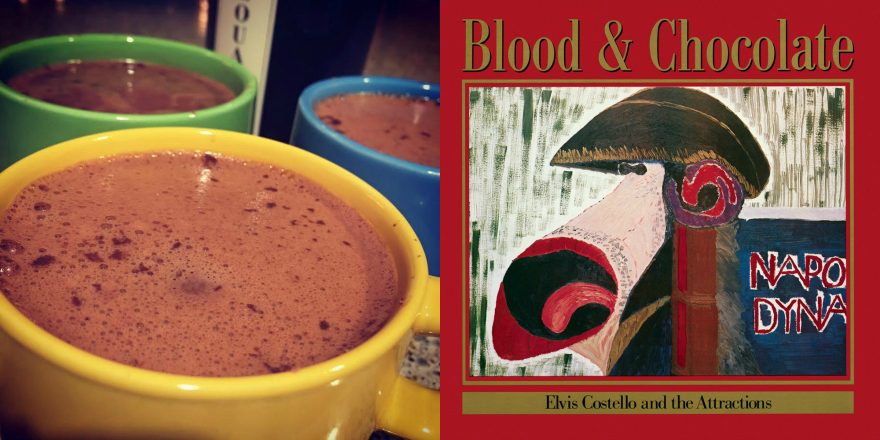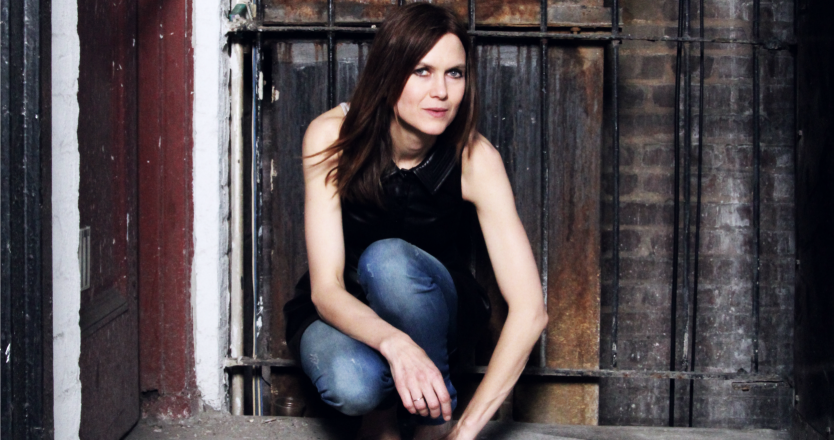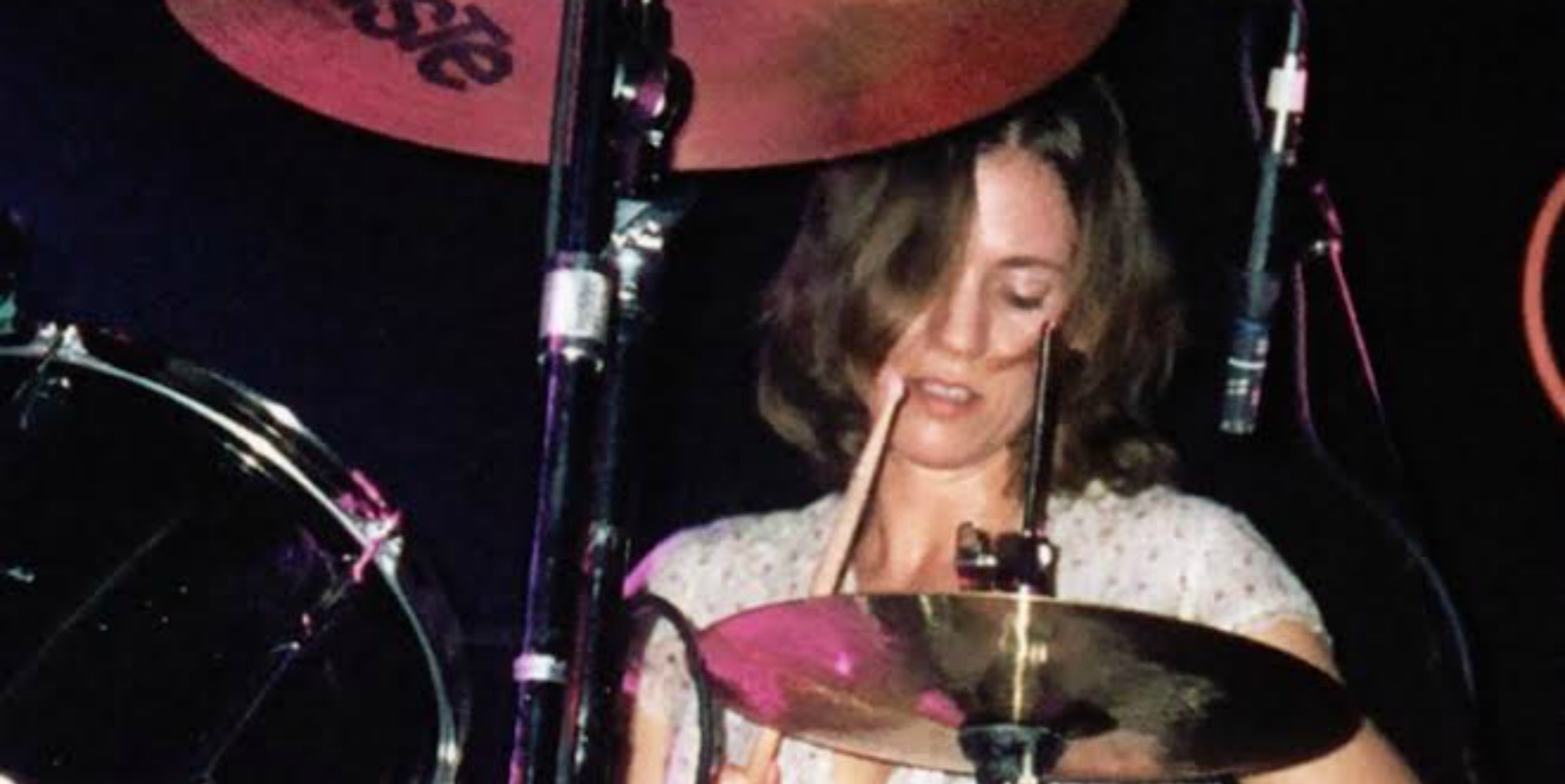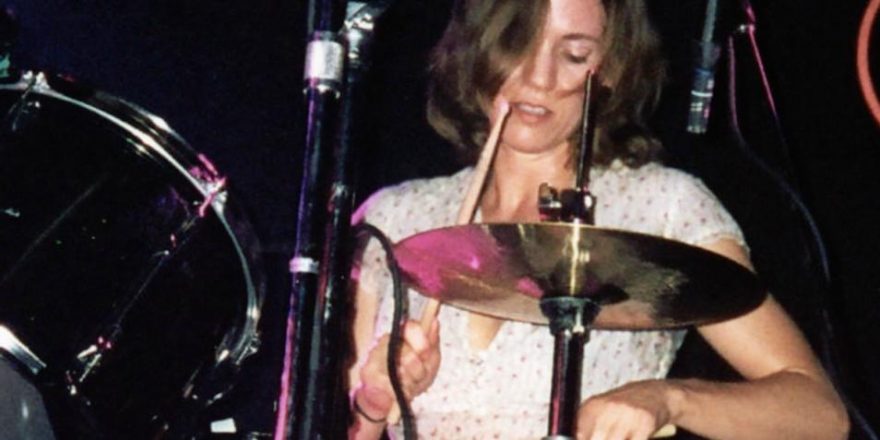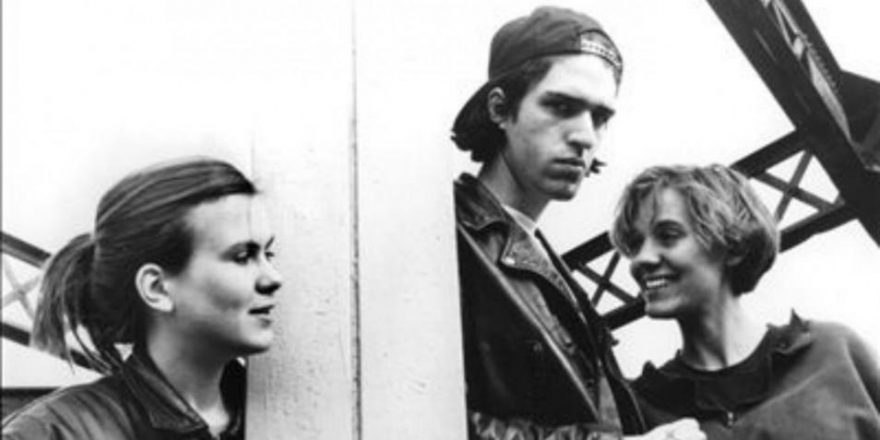It was two in the morning and I was puking my guts out while the cruelest and most menacing lyrics from Elvis Costello’s “I Want You” rang in my head. “Your fingernails go dragging down the wall,” sang Elvis. “I’m afraid I won’t know where to stop,” he threatened.
Why, I replied silently, do men hate women so much?
“Careful darlin’, you might fall,” sneered Elvis in reply.
His warning came too late; I’d already fallen. I’d been on the bathroom floor for hours and I would be camped out there all night. I was furious at myself for being sick, and I was taking it out on him. Stop writing songs about how you want to kill women! I yelled in my head. I thought about the fact that three women are killed every day in the U.S. by their husband or boyfriend. I thought about something I’d learned from Macrobiotic teacher Michio Kushi, that everything, at its most extreme, turns into its opposite. Extreme pleasure turns into pain. Extreme love into hate. Hey, I thought, you can’t spell “intoxication” without “toxic.” That cracked me up a little bit. And then I puked some more.
It was a few weeks before Valentine’s Day, and I was trying to write an essay about love songs with an accompanying recipe for boozy hot chocolate. It was part of a greater personal mission to elevate the status of Valentine’s Day, but it had gone awry, and on that dark night of body and soul, I couldn’t help but think that I’d totally ruined Valentine’s Day in advance.
Punk and new wave artists, especially male artists, had a hard time writing about love.
I’ve long wished that Valentine’s Day was a major holiday on par with Christmas and New Year’s Eve. Let’s celebrate love! I once expressed this longing to a friend, who agreed with me, until I described my idea for a big Valentine-making party, with piles of heart-shaped doilies and abundant glitter glue. She looked sad. “Yeah,” she said, “but isn’t that a tame way to celebrate love, romance and sex? Shouldn’t our party be a big, weird orgy?”
She had a point. And she illustrated something about our generation, too. Born in the late ’60s, we moved through our teen and young adult years in the ’80s, coming of age to punk and new wave songs. The love songs we absorbed in that era had an edge to them — punk and new wave artists, especially male artists, had a hard time writing about love. Politics was a much easier subject for most of them, from the Sex Pistols to the Dead Kennedys to U2, whereas romantic love was a subject lacking in urgency and intensity.
Even songs that sounded like a love song turned out to be something more sinister. In many interviews, Sting talked about being horrified to hear that couples had made “Every Breath You Take” — a tale of obsession and control — “their song.” You might have slow-danced in high school to Elvis Costello’s “Allison,” but a close listen to the lyrics would have dampened the mood. I don’t know what it’s about, but it seems at best to be about disappointment and unrequited love, at worst about wanting to kill a girl because she isn’t interested in you. U2’s “With or Without You” sounds romantic, but it doesn’t celebrate romance, it problematizes it.
All of these post-punk songwriters seemed to assume that the only way a love song could fly was to make it dark, ironic and cynical. The only honest love song was an ambivalent one. What was the origin of this assumption?
The Beatles in 1962 and 1963 had made no such assumptions. They had no problem singing about love. Early Beatles love songs were clear and unambiguous. There isn’t a definitive explanation for why girls screamed and wept at these songs with such intensity and abandon, but the Beatles themselves wondered if maybe it was due to the directness of the songs, the way they seemed to transmit personally from singer to listener: “Love Me Do,” “Please Please Me,” “From Me to You,” “I Wanna Hold Your Hand.”
Directness is powerful. Frankness is sexy.
The fact that we still can’t fully explain Beatlemania suggests a constellation of causes, from historical context to teenage brain chemistry to the aural miracle of their voices blending together. But directness is powerful. Frankness is sexy. Lyrics that could seem silly or naïve to us now were raw and slightly dangerous in an early ’60s world starting to feel the jolts of the sexual revolution.
By the end of 1964, though, the Beatles had listened to and absorbed Bob Dylan’s first two records, and it changed the way they wrote. Songs had to be introspective and complex. Songs could be about love, such as Dylan’s “Don’t Think Twice It’s Alright,” but a dose of sadness or bitterness made a love song seem more real and honest. In Ron Howard’s recent documentary Eight Days a Week, Elvis Costello addresses this transformation in the Beatles’ songwriting: “It’s a long way from ‘I Want to Hold Your Hand’ to ‘was she told when she was young that pain would lead to pleasure?’” (from Rubber Soul’s “Girl”).
This legacy influenced many white male singer-songwriters to follow, and partially explains the cynical love songs of the Police, U2 and countless others. And there’s no artist on whom this legacy hangs so heavily as Elvis Costello, who not only internalized the catalogs of the Beatles and Dylan, but who also was blessed with the talent and smarts to just about measure up to them.
I should confess: I’ve never liked Elvis Costello all that much. His dizzying cleverness usually left me empty, and I always had the uncomfortable feeling that his anger was directed at me. As a male friend of mine put it, “You’re not his target audience. You’re more like his target.” I had a change of heart, though, with his 1986 album Blood and Chocolate. It was just as venomous as any of his other records, but it also felt broken, vulnerable, sad and funny — and it was sonically dirty and cranked-up in a way I could approach and appreciate. I loved a lot of the songs. I loved how “Uncomplicated” felt like the fulfilment of its own wish: a wish for a certain kind of love as well as for a certain kind of song. But the wish undermines itself as the song shifts in tone, from longing to threat, from “I wanna buy you a big blue Diamelle” to “You think it’s over, but this is only the beginning.” I loved how “Home is Anywhere You Hang Your Head” was a weird blend of traditional and literary and punk. And I loved “Blue Chair” for being the cheeriest song written about being a sad drunk.
But “I Want You” is the standout song on Blood and Chocolate. It has a fake start, a semi-sweet “Love Me Tender” kind of number: “Oh my baby, baby,” croons Elvis, then a dissonant chord signals the start of a dragged-out, menacing dirge, with the narrator repeating the line “I want you” to his lover with increasing pathos, a refrain that punctuates his increasingly threatening accusations of infidelity. It’s some nasty shit. In 1986, I thought it was poignant and poetic, a song that wondered, exactly how brutal can a love song be?
In preparation for Valentine’s Day this year, I asked myself, what refreshments would one serve at a big, weird orgy?
My friend and I never did throw that orgy. But in preparation for Valentine’s Day this year, I asked myself, what refreshments would one serve at a big, weird orgy? You may or may not want food, but you’d definitely want drink, some kind of potent, hedonistic love potion, something chocolate and alcoholic. These ruminations led me to red wine hot chocolate. Red wine hot chocolate had its fifteen minutes of fame on the food blogosphere just a couple of months ago. I studied the recipes and came up with one of my own. I was trying to figure out how to frame my essay on love songs — maybe I could revisit Blood and Chocolate, I hadn’t heard it for years. Hey, I thought — what a perfect name for red wine hot chocolate: Blood and Chocolate!
With concept thus sloppily born, I set aside a night to test my recipe and listen to Elvis’ nasty love songs. The drink turned out exactly right, coconut milk, a touch of sugar, cayenne pepper, cinnamon, a hefty quantity of wine and a heroic dose of chocolate. It was heady, it was something new. I couldn’t help but drink a lot of it. Perhaps an ill-advised amount. While I drank, I listened. Blood and Chocolate held up well until I got to “I Want You.” What had sounded poetic in 1986 was nothing but creepy to me now. I started to feel seriously nauseated by the song. Or was it the drink making me queasy? I really wasn’t feeling good. I wasn’t feeling good at all.
In 1976, Paul McCartney and Wings released the single “Silly Love Songs.” It’s not the most important or influential McCartney song ever. It’s not the greatest thing he ever wrote. But it might be the most quintessentially Paul song. It’s an acknowledged jab at rock critics who accused him of being a lightweight, a defense of his established tendency to resist irony and self-consciousness. It suggests that Paul was less vulnerable than John Lennon (to whom “Silly Love Songs” may also be addressed) to the Dylan moment and to cultural pressures in general. He not only sings to critics and to John, but also to his former Beatle self, and to Elvis Costello in the future (Costello’s first record came out one year later). “You’d think that people would have had enough of silly love songs,” says Paul. “I look around me and I see it isn’t so.” It’s a strangely defiant sentiment.
It is also, I can report from direct experience, the exact right song to listen to after a long and wretched night. It’s a cold glass of ginger ale for the soul, the anti-venom after Blood and Chocolate the album and Blood and Chocolate the drink. After a few listens, I’d effectively implanted this happy pop confection in my head, and the dark thoughts of the night before subsided. I thought a lot about Paul and Linda McCartney. Their marriage couldn’t have been as perfect as it appeared to be, and it ended heartbreakingly early, but it was clearly a happy marriage, based on love, collaboration and mutual respect. Paul and Linda meant what they sang.
“Silly Love Songs” is pure doilies and glitter glue, but orgies and irony are overrated. Let’s celebrate love in all its shades, and let’s do it without embarrassment. If you need more of an edge, here’s a slightly dangerous, spiky drink for the holiday.
Blood and Chocolate
Serves 3-4. Seriously. Not 1.
1 can full-fat coconut milk
2 ounces dark chocolate, chopped
1 tablespoon coconut sugar (or any kind of sugar)
1 tablespoon raw cacao powder (or any kind of cocoa powder)
¼ teaspoon ground cinnamon
big pinch ground cayenne pepper
big pinch sea salt
¼ teaspoon vanilla extract
6-8 ounces dry red wine, or more if you want!
In a small saucepan over medium heat, combine coconut milk and chocolate. Whisk continuously until chocolate melts (don’t let it boil, but bring to a strong simmer).
Whisk in coconut sugar, cacao powder, cinnamon, cayenne and sea salt. Continue to whisk until mixture is smooth and hot. Remove from heat and stir in vanilla. Add wine to taste. Serve immediately in tiny cups.


